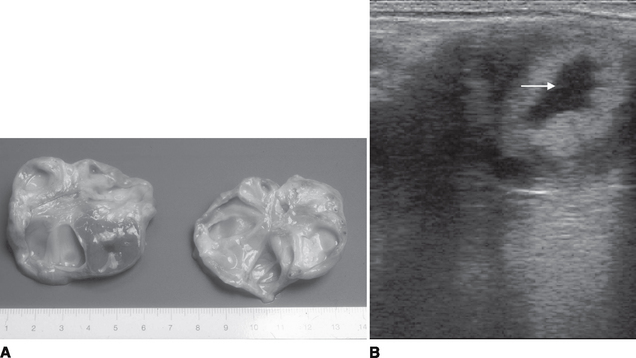CHAPTER 52Pregnancy Diagnosis in the Mare*
ROUTINE PREGNANCY DIAGNOSIS
It is important to be able to tell if a mare is pregnant for management and husbandry reasons: Pregnant mares should be managed differently from nonpregnant mares. They should have further examinations to monitor the development of the pregnancy, confirm the absence of twin pregnancies, and monitor for early embryonic or fetal death. Twin pregnancies are bad news in the mare, and if the pregnancy is diagnosed early enough, appropriate intervention is possible (see Chapter 54).
It is just as important to identify the nonpregnant mare as soon as possible. Some mares have prolonged luteal activity (previously termed “persistent corpus luteum”), and the maintenance of circulating progesterone concentrations in these nonpregnant mares means that they do not spontaneously return to estrus. Persistence of luteal activity in the nonpregnant mare is a major cause of subfertility and is the main cause of anestrus during the breeding season. Traditionally, the term “prolonged diestrus” has been used to describe a condition in which the function of the CL continues beyond its normal cyclic lifespan of 15 to 16 days, resulting in the maintenance of elevated circulating progesterone concentrations for longer than expected. The term prolonged luteal activity is preferred, because “persistent diestrus” implies that the CL persists, whereas it is possible that other CLs are formed sequentially from diestrous ovulations. Prolonged luteal activity occurs in up to 20% of estrous cycles and are not accompanied by estrus; the cervix will remain pale in color, dry, and tightly closed. If diestrous ovulations occur late in the luteal phase, they will be refractory to the effect of endogenous luteolysins, resulting in a persistent luteal phase. Such abnormal luteal activity is associated with significant problems in reproductive management because affected mares may erroneously be assumed to be pregnant.
Plasma progesterone profiles are indistinguishable from those of pregnant animals. The uterus becomes firm and tubular (tonic) and the cervix is typical of that of pregnancy. Transrectal ultrasound imaging fails to detect a conceptus, but a CL can be detected in the ovary (Fig. 52-1, A and B). The ability to detect the CL throughout diestrus represents a profound diagnostic advantage of ultrasonography over rectal palpation.
Rectal Examination
Ovaries
Both ovaries should be palpated, although ovarian palpation contributes little to pregnancy diagnosis. This is because both ovaries usually are enlarged from 18 to 40 days as a result of follicular development and the CL is not palpable. From 40 to 120 days, extensive ovarian activity with ovulations, luteinization, and development of secondary corpora lutea is evident. Follicular activity decreases from 120 days to term, and the ovaries become small and inactive. The position of the ovaries up to 60 days of pregnancy is as for the nonpregnant mare. From then on, they are drawn cranially and medially but remain dorsal to the uterus. From 5 months of pregnancy onward, the ovaries usually are not palpable.




